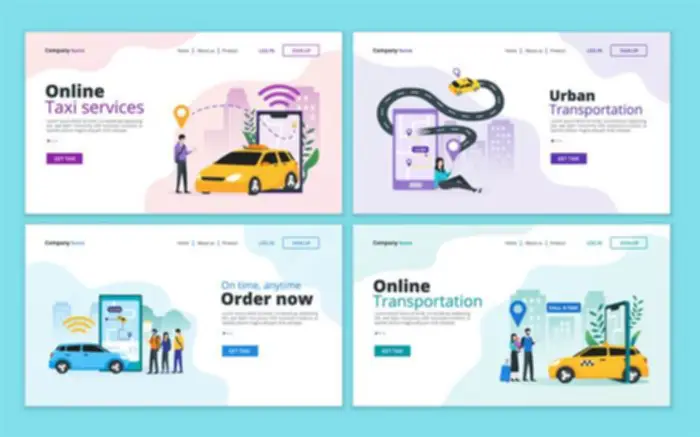Learn about the 10 commonest mistakes in Agile improvement to know what to concentrate to whereas implementing this strategy. Its first peculiarity is that each one work is cut up into iterations like the iterative mannequin. The team initially defines what actions they’ll have to perform in a specific timeframe.
After a solid design is in place, growth begins with safe coding practices. Trial procedures and working towards mock emergencies may help the staff keep ready for safety breaches and outline an effective migration plan. While such an issue is surprising, the one approach to be cautious is to gather all the requirements beforehand. Furthermore, the user finish ought to pay attention to the implications of late requests. Lack of communication among the many team members impacts various aspects of SDLC, similar to quality, consistency, deployment, etc. To keep away from this drawback, it’s essential to establish a clear and shared vision to encourage communication.
Speedy Software Growth (rad) Sdlc Models
The maintenance section ensures that your software program system stays secure, environment friendly, and adaptable to growing enterprise needs. Accurate requirement evaluation is important since inaccurate or absent requirements at this level may end in expensive revisions later in the improvement course of. The next stage after planning is to compile particular system necessities. The primary priorities throughout the evaluation part are understanding and recording the system’s wants.

Whether you are a developer, project supervisor, or stakeholder, understanding and implementing SDLC can significantly contribute to your program endeavors. The SDLC supplies a structured approach to defining and documenting project objectives and necessities. It ensures that each one stakeholders have a transparent and shared understanding of what the project aims to achieve. Enterprise analysts and project managers interact in conferences with the customer to determine what the software program ought to accomplish, who the end-users are, and the purpose of the product. The aim is to create a complete Software Program Requirement Specification (SRS) document that serves as a reference throughout the project’s lifecycle. Improvement system development life cycle phases culture that encourages collaboration between growth and operations groups is essential, optimizing software improvement performance/costs and enabling fast function deliveries.

Updates made to the software underneath growth are brief but at a higher frequency. There are additionally options to the types of SDLC methodologies detailed additional beneath. RAD provides implementation of CASE instruments, joint application growth, and prototyping.
Concern concerning the integrity of programs also increased, and a variety of laws had been passed relating to greatest practices for the way data was saved, accessed, transmitted, and shared. This additional difficult techniques improvement and adjusted how programmers approached the task. IT Craft developers delivered and launched an internet portal on time utilizing Agile methodology.
This section consists of multiple forms of testing, similar to unit testing, integration testing, system testing, and person acceptance testing. The goal is to identify and repair any points earlier than the system is deployed. In the Analysis section, the focus is on understanding and documenting the system’s requirements. This involves gathering enter from stakeholders, reviewing present processes, and identifying the system’s needs. The data collected varieties the premise for growing a system that addresses both user expectations and organizational challenges. The System Improvement Life Cycle (SDLC) consists of several interconnected phases that present a structured framework for growing a system.
Sdlc Models: Agile, Waterfall, V-shaped, Iterative, Spiral
It entails verification phases on one aspect and validation phases on the other, with coding becoming a member of them within the middle. It ensures that testing is integrated into each phase of the event process, enhancing software quality and reliability. The V-Model is especially useful when rigorous testing and validation are critical. After successful testing and approval, the program is ready for deployment. It is either moved to the production environment directly or undergoes User Acceptance Testing (UAT), relying on customer expectations. UAT includes replicating the production environment and welcoming both the shopper and development staff to test the software completely.
It’s linear and straightforward and requires development teams to complete one phase of the project completely before moving on to the following. SDLC is a scientific approach to method software program improvement for business and different purposes. The phases throughout the SDLC are defined broadly, and the fashions that deploy these phases provide a spread of significant approaches that might be adopted by groups for a secure start. This information provides a transparent, up-to-date explanation of SDLC’s various in style phases and models, serving to you select the best version on your software development course of. As A Substitute of starting with complete data of necessities, project improvement teams following the iterative methodology implement a set of software program requirements.
- During the starting stage, a company first decides whether or not there is a need for a new system.
- Completely Different modules or designs will be built-in into the first supply code by way of developer efforts, usually by leveraging coaching environments to detect additional errors or defects.
- Agile promotes steady interplay between growth and testing groups throughout the system development life cycle process.
- The downside arises when there is a sudden change in vision, and it could simply impression and disrupt software program development.
Phases

This high-level description is then broken down into the components and modules which could be analyzed, designed, and constructed separately and integrated to perform the enterprise Large Language Model objective. SDLC and SAD are cornerstones of full life cycle product and system planning. The safe SDLC is a framework that integrates safety at every stage of software improvement. In today’s cloud-centric landscape, cyber threats are rising, which increases using integrating security within the development life cycles.
Testing and verification are important steps in ensuring an application’s safety. Take, for example, a ride-sharing app that often updates its options to boost user expertise. With every replace, modifications to the code would possibly unintentionally introduce security vulnerabilities, exposing user knowledge or journey details. By integrating safety practices inside the SDLC, we can identify and handle potential points early on, preventing them from escalating into severe issues.
The Iterative SDLC fashions offers a dynamic and adaptive approach to software program growth, aligning with the trade’s demand for flexibility and effectivity. By embracing incremental progress, steady evaluation, and stakeholder engagement, improvement groups can ship high-quality software that meets evolving person necessities. As organizations navigate the complex landscape of software development, the Iterative SDLC model stands as a priceless methodology for achieving success in a quickly altering surroundings. The advantages of software program improvement life cycles are that it promotes consistency and predictability in project outcomes. By following a structured approach https://www.globalcloudteam.com/ and adhering to the outlined phases and milestones, teams can ship tasks within anticipated timeframes and budgets, leading to foreseeable results. SDLC involves a series of particular steps to ensure that a pc system meets the intended wants and that it is the absolute best program for the duty.
An output artifact does not have to be fully outlined to serve as input of object-oriented design; evaluation and design could occur in parallel. In practice the outcomes of 1 exercise can feed the opposite in an iterative process. At this step, desired options and operations are detailed, including display screen layouts, business rules, process diagrams, pseudocode, and other deliverables.
